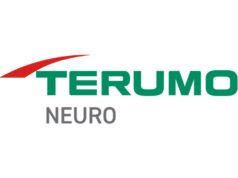Children and adolescents who received deep brain stimulation for generalised dystonia maintained significant symptom relief for up to eight years, according to a study presented at the 12th World Congress of the International Neuromodulation Society (6–11 June, Montreal, Canada).
The results reinforce the observation that patients with a shorter duration of symptoms, and a younger age at implantation, experience better outcomes, said Fabián Piedimonte, of the Argentinean chapter of the International Neuromodulation Society—Sociedad Argentina de Neuromodulación (SANE), the CENIT Foundation, and Buenos Aires Provincial Program of Neuromodulation. The study was presented as an oral abstract at the 12th World Congress by co-author and SANE president Juan Carlos Andreani, of the CENIT Foundation and Buenos Aires Provincial Program of Neuromodulation.
Dystonia is considered the third most-common movement disorder after essential tremor and Parkinson’s disease. Its symptoms include twisting and repetitive motions or abnormal posture, which can be frustrating and painful. While there are many types and causes, one of the most severe types of dystonia can begin in childhood and become severe before the end of the teen years.
Previous experience in Parkinson’s disease has suggested that if conservative measures do not adequately control dystonia symptoms, deep brain stimulation to the globus pallidus interna (Gpi) may be effective.
This study confirms growing evidence that deep brain stimulation to the Gpi is most effective in patients with primary dystonia (not secondary to some other condition or lesion), particularly in patients with primary dystonia who have a hereditary component, and carry the DYT1 mutation.
The 16 patients in the study were treated at medical centres in Buenos Aires, Argentina. Their average age of onset was 9 years old (between 1 and 14 years of age) and the median age at surgery was 12 years (between 8 and 19 years of age). On average, patients’ motor symptoms improved 69% and their disability sub-scores improved 60%, while some patients even saw complete symptom relief. In four of the 16 patients, the motor-symptom improvement was less than 50%. Half of those patients did not carry the DYTI mutation.
The patients were seen every few months to adjust their stimulation parameters, since the natural evolution of the disease can cause new symptoms to develop. The paediatric patients were operated on under general anaesthesia in a single-stage procedure, using microelectrode recordings to map the best path to guide the stimulation leads to the stimulation target structure. As rechargeable pulse generators became available, they were preferentially used to provide the therapeutic stimulation, since they do not require replacement surgery every few years.
In dystonia, initial symptom relief from deep brain stimulation appears in weeks, with settings being optimised over the first two or three months. The best relief generally develops during the first year post-surgery.
In addition to helping reduce patients’ symptoms, other important benefits of adequately managing dystonia include allowing the children’s bones to continue growth with less risk of deformity from ongoing muscle contraction, and enabling ease of hygiene through better voluntary movement.










